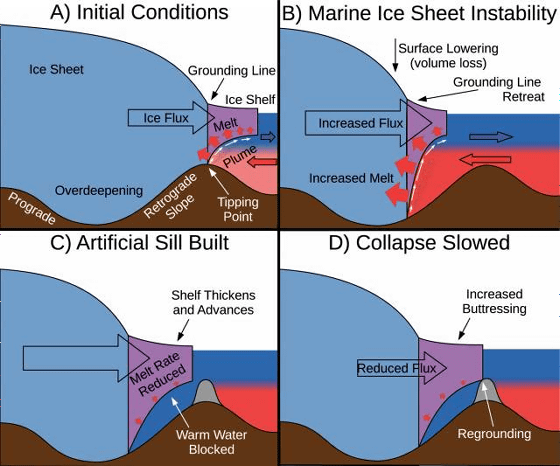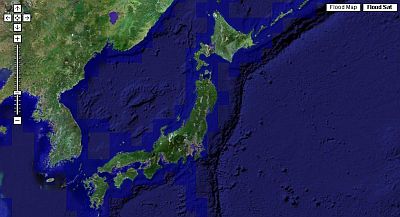'Delaying sea level rise' What is a geotechnical approach?

Temperature rises due to the effect of greenhouse gases Global warming is causing concern about sea level rise. Michael Walbik, who is engaged in research on geotechnics at Princeton University, said that "it is possible to delay the rise in the sea level," and it is necessary to take long-term action to realize this .
A New Geo - Engineering Scheme to Prevent Catastrophic Sea - Level Rise - The Atlantic
https://www.theatlantic.com/science/archive/2018/01/a-new-geo-engineering-proposal-to-stop-sea-level-rise/550214/?single_page=true
Wolovick: Geoengineering polar glaciers to slow sea-level rise
https://www.princeton.edu/news/2018/03/19/wolovick-geoengineering-slow-sea-level-rise-polar-glaciers
It is said that sea level rise in the 21st century greatly affects Greenland and Antarctic ice sheets . So, Mr. Walbik conducted a survey of Greenland's overflow glaciers and Antarctic ice sheets to find ways to control sea level rise. As a result, it was found that ice melts at severe speed due to the influence of warm seawater once ice on the surface melts into the sea. Mr. Walbik decided to consider "How to suppress ice melting into the sea".

And Mr. Walbik's idea is to "build an artificial sill so that warm seawater will not melt the ice sheet". The following image shows the effect when Mr. Walbik proposed artificial sill. In the following image, the ice sheet spreading from the continental shelf to the ocean is light blue, the ice floating in the sea is red, the warm sea water is red, the low temperature seawater melted by sea water is represented by blue. When starting from the state of A, the ice sheet is eroded by the warm seawater flowing through the seabed, so it will be in the state of B. Therefore, if you construct an artificial threshold (Gray) that blocks warm seawater like C, the seawater temperature in contact with the ice sheet will be lower. Even in low temperature seawater, the ice sheet melts, eventually changing to the state of D, but because it will not touch warm sea water, it will be able to keep the melting speed of ice to a large extent.

Mr. Walbik said, "When doing such a project, billions of dollars (hundreds of billions of yen) expenses are needed, but if we leave the sea level as it is, the damage will be 50 trillion dollars a year ( There is a possibility of reaching the scale of about 5,500 trillion yen) ", and it is said that the ultimate cost will be lower if an artificial sill is constructed.
In addition, Mr. Walbik also stated "This is a symptomatic treatment only", and even if this method is adopted, it is said that it will not alleviate global warming by greenhouse gas. He says, "I believe we can earn hundreds of hours by this response, but there is nothing meaningless unless we take any measures against greenhouse gas emissions during this period."
Related Posts:
in Science, Posted by darkhorse_log







